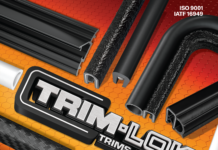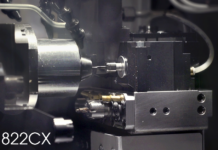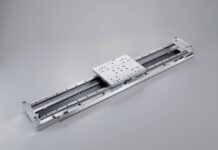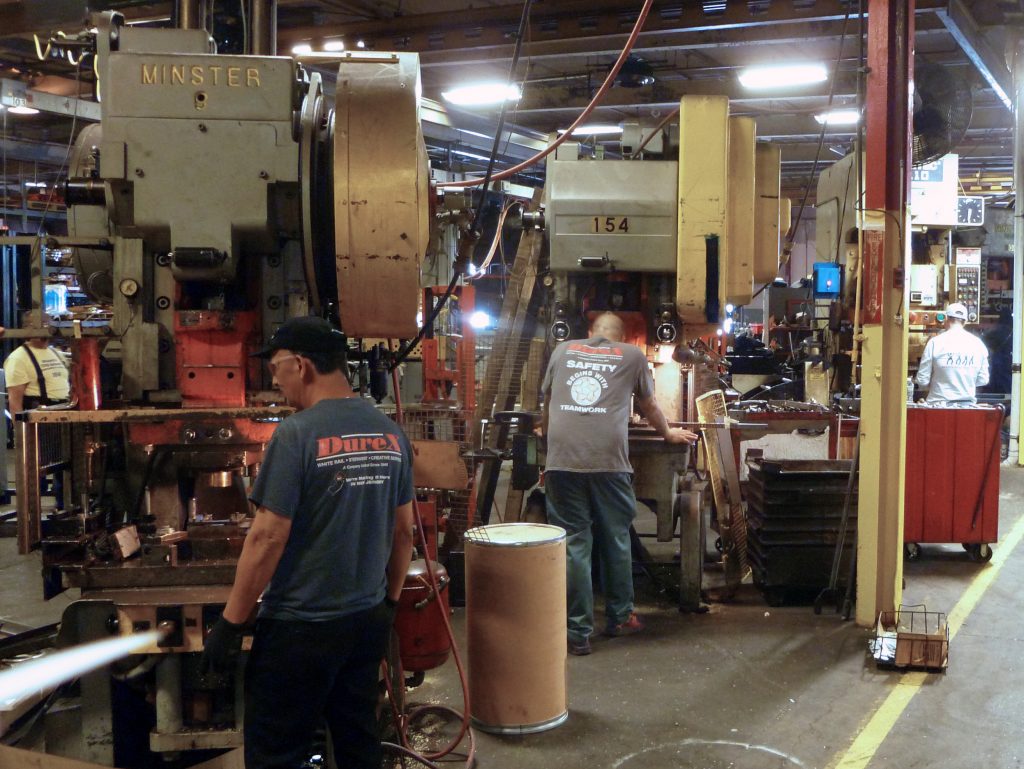OEMs that outsource metal parts to contract manufacturers must often guess at the immediate production requirements for new products, so initial forecasts are often conservative or – the complete opposite – unrealistically high.
 With this inevitable uncertainty, OEMs are also hesitant to invest significant dollars in hard tooling, which can cost tens of thousands of dollars upfront. Instead, less expensive soft tooling options are often selected, even if it increases the price-per-part initially.
With this inevitable uncertainty, OEMs are also hesitant to invest significant dollars in hard tooling, which can cost tens of thousands of dollars upfront. Instead, less expensive soft tooling options are often selected, even if it increases the price-per-part initially.
However, as production demands increase, soft tooling options can quickly slow production. At the appropriate “tipping point” in demand, OEMs ideally should transition to hard tooling, hybrid approaches and even progressive dies that speed turnaround time and drive down the price.
This “laddering up” of the range of tooling options requires assessing at each plateau whether or not greater upfront investment in tooling will pay off with a relatively quick ROI. Since tooling plays such a key role in this equation, it also means working closely with OEMs willing to evaluate the best available tooling options at any time as production requirements increase.
“As production requirements increase, transitioning to a more efficient type of tooling can save some OEMs tens of thousands of dollars a year with a ROI measured in weeks or a few months,” says Bob Denholtz, president of DureX Inc., an ISO 9001 registered contract metal fabrication facility based in New Jersey. “Any good metal parts supplier should be able to help the OEM determine the most cost-effective tooling for their situation.”
Although, tool selection involves various factors, including part size, metal thickness, complexity, and finish, the cost per part is often related to the type of tooling utilized, says Denholtz.
This progression generally ranges from soft tooling to hard tooling, hybrid approaches, staged tooling, and fully progressive dies.
Soft Tooling
Low volume part manufacturing often involves soft tooling for sheet metal fabrication. Usually this entails having a flat part or a slightly formed part getting holes, slots, or tabs punched in it by a CNC laser or turret punch press before going to a press brake and getting bent to the proper angle.
“Soft tooling typically costs $75 to $500, but can cost up to $2,000-3,000 for more complex parts,” says Denholtz. “This can work for prototyping and low volume production orders. However, it can take several minutes of machine time to make each part, depending on its complexity, so the cost per part is higher.”
One strategy to lower or even eliminate soft tooling cost is to borrow the tooling from a supplier’s “library of tools.” Because DureX has been serving a variety of markets for over 30 years, they have built up an impressive inventory of soft tools in many sizes and shapes. When appropriate, these tools can be put back in service. When that is the case, DureX does not charge for the item.
“Suppliers with a wide range of experience have the most soft tools in their inventory, so may charge nothing or a discounted rate for a tool in their library,” says Denholtz. “Those contract parts manufacturers that only serve specific industries will generally have to charge for new soft tools.”
Hard Tooling
When production volumes increase to 15,000 or more parts annually, OEMs often benefit from moving from soft tooling to hard tooling to reduce costs. According to Denholtz, the cost of hard tooling can vary from $5,000 to $300,000 or more depending on its size, complexity, and whether it is designed to produce finished parts.
“When one OEM gave us a power supply chassis and cover to produce, they started at 500 parts per month with soft tooling,” says Denholtz. “However, when production requirements increased to 4,000 parts a month, we suggested they move to hard tooling to reduce the price from $22 to $15 a part. With a hard tooling cost of about $85,000, they achieved ROI in about four months.”
Unlike soft tools, hard tools are not available in a contract manufacturer’s “library” as they are built to produce that specific product so each must be purchased. Still, there are ways to keep costs down including using the same hard tooling for a “family” of products.
Hybrid Tooling
As the name implies, hybrid tooling is a combination of soft and hard tooling. Depending on the part, it might begin as a flat piece of metal that is punched or formed with a soft tool, with further forming by a hard tool.
For example, a metal office ceiling fixture could start in a turret that punches all the holes and slots before it is moved to a hard die that forms up the sides into a box in one operation.
 “So instead of putting a flat piece of metal in a brake and hitting it four times to bend the two sides and two ends, I could use a die and hit it once. So it only takes 30 seconds or less to make the entire part instead of 2 minutes,” explains Denholtz.
“So instead of putting a flat piece of metal in a brake and hitting it four times to bend the two sides and two ends, I could use a die and hit it once. So it only takes 30 seconds or less to make the entire part instead of 2 minutes,” explains Denholtz.
Staged Tooling
To create metal parts at even greater speed and volume as well as lower price per part, staged tooling can be used. This basically involves moving a metal part between two high performance dies, so the work is performed in two distinct processes that utilize hard tooling.
“Instead of taking 5 minutes in a machine to punch all the needed holes individually using a soft tool, I could make a blanking die and punch everything in one shot in 5 seconds,” says Denholtz. “Then I could put it in a box form and form it into shape in another 5-10 seconds.”
Progressive Dies
The fastest, highest volume part production can be achieved by a progressive die. This accomplishes multiple operations in a single process using hard tooling. Depending on the part, a progressive die utilizes metal coil and can often produce a finished part with every machine cycle.
“When an OEM asked us to produce a metal card cage to hold circuit boards, they were spending about $125 per cage,” says Denholtz. “When volume rose to 1,000 parts a week, we reduced the cost to $55 per cage by switching to a progressive die. Although the hard tooling cost was substantial – about $350,000 – the OEM achieved ROI in only 5 to 6 weeks.”
Value Added
While working with a metal part manufacturer to select the best tooling option for the production volume is vital, partnering with a supplier that can also provide value-added finishing and assembly can further streamline the manufacturing process.
“The ability to take a part from design and prototype through ramp up and full production, whether it is soft tool, hard tool, or transitioned is important,” says Denholtz. “So too can be the ability to do turnkey manufacturing, including assembly, powder coating, silk screening, packaging, and fulfillment in some industries.”
Whatever the scope of manufacturing, OEMs can benefit by working closely with metal part suppliers to optimize the tooling for the job. In doing so, they can significantly reduce per-part costs with a surprisingly fast ROI.





















